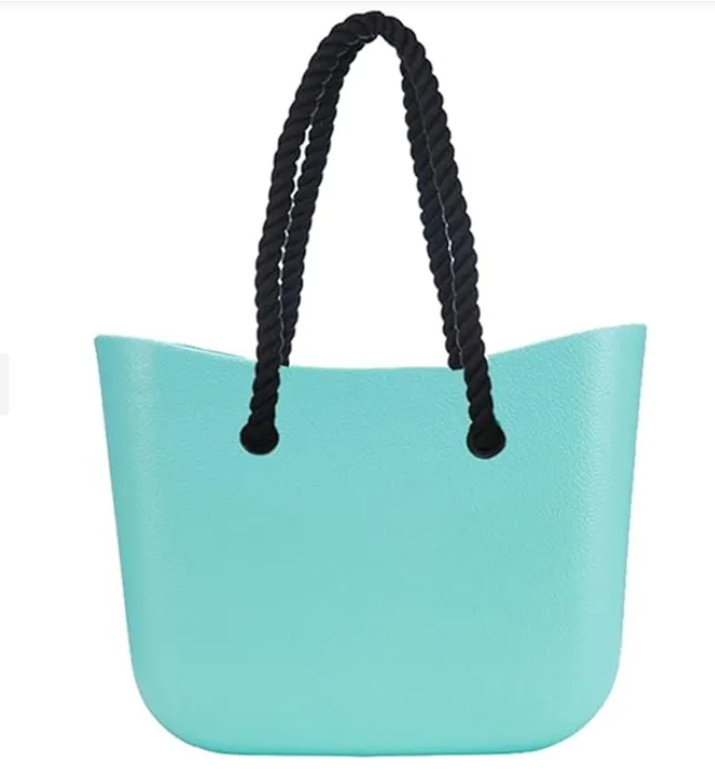Key Features of a High-Quality Beach Tote
Material Durability: What to Look For
Material matters when picking out a good beach tote. Most folks go for canvas, nylon, or polyester because they stand up pretty well against sand and water damage. Canvas bags tend to be really tough and have that timeless look many people love. Nylon and polyester are popular choices too since they're light on the shoulders and keep moisture at bay. UV protection should also be on the radar list. Without proper UV resistance, colors fade fast and the whole bag just looks worse for wear after a few summers by the shore. Manufacturers usually claim their products will last multiple seasons, especially nylon which resists scratches so well, while polyester holds its shape better even after getting stretched out during transport.
Reinforced Stitching for Longevity
When it comes to beach totes, reinforced stitching really makes all the difference in how long they last. Most good quality totes have either double or triple stitching right where they need it most the handles and along those tricky seams. This helps them hold up against heavy stuff we pack inside plus all that sand and water exposure over time. Double stitching basically means there's an extra layer of thread holding everything together, which definitely makes things stronger. Triple stitching goes one step further, giving those stress points even more support when someone needs to carry something particularly heavy or awkward. People who know textiles well always talk about how important proper stitching techniques are. Many manufacturers get their products certified through various quality assurance programs too. What these certifications actually do is confirm that the stitching meets certain minimum standards across the board. For anyone shopping for a durable beach tote, checking for these kinds of details can save headaches later on when trying to haul groceries or gear from the car to the shore.
Sturdy Straps and Handle Construction
The way a beach tote is built around its straps and handles really makes all the difference when lugging around sand toys and sunscreen. Straps that are padded and can be adjusted take pressure off the shoulders, which matters a lot after walking through hot sand for miles. Manufacturers who use techniques like cross stitching create handles that last much longer, something anyone who owns a cheap bag knows too well after seeing it fall apart at the seams. These reinforced stitches actually stop the fabric from fraying out, which happens constantly with budget models. Many people have shared stories about their straps snapping mid-beach day, while others rave about how their good quality tote just keeps going season after season. The ergonomics of those solid straps turn what could be a painful chore into something comfortable enough to enjoy, making these totes practically indispensable for anyone planning regular visits to the shore.
Construction Elements to Examine
Reinforced Seams and Stress Points
Looking at beach totes, it really matters how well those seams and stress points are built. Corners and closures usually get the most action from daily use. There are different kinds of seams out there too flat ones look neat but aren't always tough enough. Bound seams give extra protection so threads don't come loose over time. Totes that skimp on good seam construction often fall apart fast, especially around handles or along the sides when someone just gives them a normal tug. On the flip side, quality beach bags with strong seam reinforcements hold up way better against all that sand and stuff people pack inside for days at the shore. Most experienced shoppers know that double stitching or properly finished seams make all the difference in keeping fabrics together where they're most likely to split apart after repeated use.
Stabilizers and Structural Support
Good stabilizers really matter for keeping those quality beach totes standing upright and supportive. Most decent bags come with base panels or built-in frames that stop them from drooping under all that sand, sunscreen, and snacks we pack inside. These structural supports basically keep the tote looking good while handling everything from lightweight towels to heavy coolers. Bags with proper stabilization distribute weight better across the whole structure, so the shoulder straps don't get pulled down too much and the whole thing won't tip over if left on a rocky shoreline. Someone who makes these bags told me recently that smart structural design makes all the difference when heading to the beach, turning what could be a frustrating experience into something actually useful. When shopping for a new tote, knowing about these features helps pick one that looks great but still works well for carrying all our stuff without collapsing under the load.
Functional Design Considerations
Water Resistance and Sand-Proof Features
A good beach tote needs to stand up to water and sand if we want our stuff protected while at the shore. Materials that resist water help keep things safe from those unexpected splashes or when the weather takes a turn for the worse. Most manufacturers these days use different techniques to make their bags waterproof, including special coatings and layered fabrics. These features really make a difference when fighting off both moisture and gritty sand getting inside. People who have used such bags report that they stay much drier after swimming sessions, plus there's far less sand buildup inside compared to regular canvas totes. This means less cleaning hassle later on when packing up to leave the beach.
Practical Additions: Pockets and Linings
A good beach tote isn't just about carrying stuff around. When manufacturers put real thought into pocket placement and lining materials, they turn what could be an ordinary bag into something actually useful. Some clever designs stand out though. Insulated sections keep drinks cool while zippered pockets hold smaller items without them disappearing. And let's face it, nobody wants to spend time scrubbing sand off their bag later. Most people who've used these kinds of totes talk about how much they appreciate the different pockets. Top rated models often have several compartments where folks can stash phones safely, keep track of keys, and even store sunscreen within reach. These features aren't just convenient they solve real problems that beachgoers encounter all the time.
These design elements ensure that each tote remains functional and stylish, catering to various needs while enhancing user convenience and satisfaction at every beach outing.
How to Test for Quality Before Buying
Weight Distribution and Load-Bearing Capacity
When thinking about buying a beach tote, it makes sense to check how well it handles weight distribution and what kind of load it can actually carry. A good tote spreads the weight around so it doesn't leave marks on the shoulders or cause back pain after carrying it for hours. Look at the specs provided by makers regarding how much weight these bags can handle. These numbers give a pretty good idea about whether the bag will hold up when loaded with towels, sunscreen, maybe even some drinks for the day at the shore.
Here's how you can test a tote's comfort:
- Pack the tote with items you would typically carry to the beach, such as towels, sunscreen, and snacks.
- Walk around with the bag to monitor any discomfort or adjustments needed due to uneven weight distribution.
- Opt for a tote with reinforced straps and quality materials designed to bear heavier loads without tearing or stretching.
Checking Zippers and Hardware Reliability
A vital aspect of any beach tote's quality lies in its zippers and hardware reliability. Zippers should glide smoothly without snagging, ensuring easy access to your belongings. Consider the construction of other hardware components like clasps and rings; these elements are essential for a secure and lasting tote.
To evaluate the durability of these features, follow these guidelines:
- Examine the stitching around zippers and hardwareâwell-sewn areas suggest better longevity.
- Look for zippers that feature corrosion-resistant material, apt for the beach environment.
- If purchasing online, user reviews can provide insights into long-term reliability. Some manufacturers may offer warranties on these componentsâa testament to their confidence in product quality.
Ensuring these parts are robust will enhance the overall lifespan and functionality of your beach tote, making it a worthwhile investment.
FAQ
Why is reinforced stitching important in beach totes?
Reinforced stitching ensures the durability and longevity of beach totes by strengthening stress points that bear weight, such as handles and seams.
Which materials offer the best durability for beach totes?
Canvas, nylon, and polyester are recommended for their resistance to sand, water, and UV rays, making them durable materials for beach totes.
What should I look for in a beach tote's straps and handles?
Opt for padded, adjustable, and cross-stitched straps and handles for maximum comfort and support when carrying heavy items.
How do brands like L.L. Bean and Lands' End ensure beach tote quality?
These brands are known for their durable construction, strong materials, and high-quality customer service, often highlighted by numerous awards and certifications.







